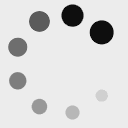L'Ordre
We realise that this subjective shot keeps coming back: we approach a gate but can’t go through; we go down an alley, through the backstreets; we wait, we keep a look out – all these shots reoccur – we see them several times… These subjective shots are from the point of view of the lepers, so that we identify with the repetition of their sequestration. A man severely affected by the disease, filmed in black and white, talks to us and warns us… We come and film them and they’re left with nothing, not even the truth… His speech is a last resort, his words vilifying the society that’s banished him forever because he’s sick. This total injustice stems from fate and fear. The poetic filmmaking with its rhythm and rhyme is the cinema of the omnipresence in front of and behind the camera, the suffering human being who talks and watches; the cinema of the lepers that we could all be.
Claire Simon
Director
We realise that this subjective shot keeps coming back: we approach a gate but can’t go through; we go down an alley, through the backstreets; we wait, we keep a look out – all these shots reoccur – we see them several times… These subjective shots are from the point of view of the lepers, so that we identify with the repetition of their sequestration. A man severely affected by the disease, filmed in black and white, talks to us and warns us… We come and film them and they’re left with nothing, not even the truth… His speech is a last resort, his words vilifying the society that’s banished him forever because he’s sick. This total injustice stems from fate and fear. The poetic filmmaking with its rhythm and rhyme is the cinema of the omnipresence in front of and behind the camera, the suffering human being who talks and watches; the cinema of the lepers that we could all be.
Claire Simon
Director

